As the series progressed, Akira Toriyama began introducing a somewhat elaborate hierarchy of gods in the world of Dragon Ball, one that occasionally takes great influence from the real-world hierarchy seen in religions such as Buddhism and Hinduism. The majority of these divine figures inhabit the Heavenly Realm of the “Dragon World” and it is their job to stand watch over the universe’s inhabitants, both as they live their daily lives as mortals and in their eventual shift to the afterlife. Like many hierarchies, most divine figures oversee a specific region and report to a superior that oversees those collective regions. To help illustrate this concept, an updated hierarchy chart based on one printed in Chōzenshū 4 can be seen below (click or tap for larger view). Noonte that with the exception of the Omni-King (who rules over all twelve universes) and his attendants, this hierarchy chart pertains only to Universe 7, the home of Goku and friends. While the other 11 universes likely follow a similar hierarchical structure (as seen in some of the direct parallels we are shown during the franchise), this has yet to be explained in full.
Following this chart are detailed descriptions of each hierarchical position in the “Dragon World”, starting from the bottom all the way to the top.
Planetary Gods
 Title: God (神様; kami-sama)
Title: God (神様; kami-sama)Positions: One per planet with intelligent life-forms
The most abundant gods in the “Dragon World” are those that supervise individual planets. In fact, the first god ever seen in Dragon Ball is the God of Earth. As Daizenshuu 7 explains, the gods of each planet are selected from among the sentient life-forms of that planet. Attendants from the afterlife are dispatched to assist these gods that have been picked from the planet’s natives; Karin and Mister Popo are two such godly attendants. The purpose of this system is to oversee and protect the sentient life-forms of each planet, and more importantly, to hasten the development of immature sentient species, guiding them toward the greatest happiness. The attendants sent from the afterlife are only permitted to act in a subservient role to the planet’s god, based on the idea that a species’ fate ought to be entrusted to the species itself. This also seems to imply that planets with non-sentient life-forms are not governed within this system, and are therefore left to fend for themselves.
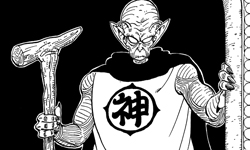
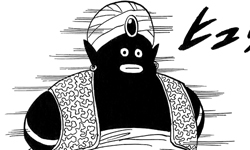
One method by which the gods of the afterlife govern the Living World is by dispatching personnel to each planet. This is in order to oversee and protect a planet’s sentient life-forms. But beyond this, the main goal is to stimulate an immature sentient species’ growth, guiding it towards the greatest happiness. However, these personnel dispatched to each planet often do not become that planet’s god, but instead serve as a sort of attendant for the god. Instead, an appropriate person from among the planet’s sentient life-forms is selected to serve as god. The principle seems to be that a species’ fate should be entrusted to the species itself, and so the dispatched personnel are only permitted to act in a purely subsidiary role. In fact, Mister Popo and Karin were dispatched from the afterlife to Earth and devote themselves to supporting whoever is selected as god.
— “Dragon Ball Daizenshuu 7: Dragon Ball Large Encyclopedia” (p. 37)
In Dragon Ball Z episode 20, Kaiō explains the history of the Saiyans to Son Goku. In this description, he claims that Planet Vegeta was destroyed when its God caused a huge meteor to collide with the planet; this ties into Raditz’s (much earlier) explanation that Planet Vegeta had been destroyed by a meteor impact. Presumably Planet Vegeta would have had a God of its own, but of course we later learn that it was really Freeza who destroyed the planet, and that the meteor story was just a lie spread to cover up this fact. This raises the question: was Kaiō misinformed like everyone else, or was he just trying not to reveal Freeza’s existence to Goku? For the most part, this inconsistency can be chocked up as just that: an inconsistency brought about by filler material in the TV series which was ignored completely as the original manga author continued his way onward into the series.
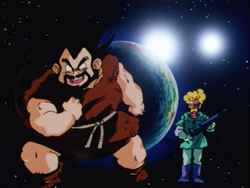
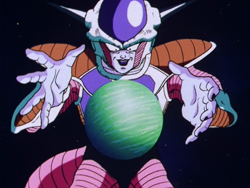
It is interesting to think, however, about the role that Gods take in the series, particularly with regard to individual planets. Freeza had amassed such an empire with his power that he essentially held complete control over the entire Saiyan race and their planet. While Freeza was certainly never referred to as a “god” by any Saiyan that is shown in the series, his ultimate authority — extending all the way down to the fate of the planet — starts to approach that level. Is Freeza any more or less a “god” of Planet Vegeta and the Saiyans than the child of Katatz was for the people of Planet Earth?
That all being said, in a related area, the Great Elder of Planet Namek appears to taken on a sort of godly role, particularly in the way that Kaiō eventually communicates between the elder and Earth’s own God. See the “Concepts” mini-guide for additional citations on this matter.
Enma and the Afterlife
 Title: Great King Enma (閻魔大王; enma-daiō)
Title: Great King Enma (閻魔大王; enma-daiō)Position: One
King Enma is judge of the dead, determining if individuals will go to Heaven or Hell. He also approves exceptional dead people to keep their bodies and train under a Kaiō, oversees the process of reincarnation, and manages Hell. It should be noted that Enma is a figure from Buddhism and Hinduism — where he is known as “Yama” — making him one of the only Dragon Ball gods based on an actual religious figure.
All life-forms in the Living World become spirits once they die, and go to the palace of King Enma in the Enma Realm. Afterwards, each spirit is judged by King Enma, determining whether it goes to Heaven or Hell. From this principle, it is clear that a life-form is comprised of both a physical body and a spirit. Ordinarily, a dead person can enter the Enma Realm only in spirit form. However, there are exceptions. At the discretion of a planet’s god, in rare occasions people can visit the Enma Realm with their physical body intact. Most such people do so in order to receive training from Kaio. Son Goku is one such example.
— “Dragon Ball Daizenshuu 7: Dragon Ball Large Encyclopedia” (p. 37)
Based on the official god hierarchy charts, Enma outranks the planetary gods but is lower on the hierarchy than the Kaiō; you can also see this in the series, to an extent, in the levels of politeness they use when talking to and about each other. God even scolds Goku for speaking so informally to King Enma when requesting he be allowed to train with Kaiō. Enma himself traveled Serpent Road in the distant past and trained under North Kaiō, allowing him to subdue any violent spirit that arrives for judgement.
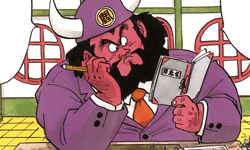
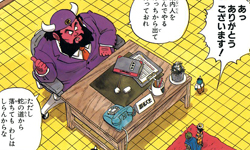
Souls that are judged by Enma to be good board an extravagant passenger plane and are flown to Heaven, located in the sky above Enma’s mansion in the Kaiō Realm, just below Planet Dai Kaiō. Goku trained here during his preparation for the 25th Tenka’ichi Budōkai, at which time he was able to attain Super Saiyan 3. Conversely, Hell is where those deemed to be bad are sent by Enma. Being the lowest realm of the afterlife, Hell is separated from the above godly realms by special clouds; those coming from above can pass through into Hell, but anyone coming from below may not pass, trapping them in Hell.
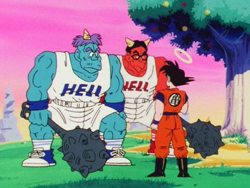
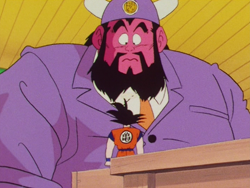
In Dragon Ball Z episode 13, Goku accidentally falls off of Serpent Road into Hell while on his way to train with North Kaiō and becomes trapped. There he meets Gozu and Mezu, two oni charged with guarding Area 3 of Block 1 of Hell. After defeating them in a set of challenges, they show him a secret way out of Hell… which leads to the top drawer of Enma’s desk, and Goku must start his journey down Serpent Road all over again.
Gozu and Mezu are loosely and humorously based on Ox-Head and Horse-Face, two guardians of the underworld in Chinese mythology, with “Gozu” and “Mezu” being the Japanese readings of their Chinese names (similar to “Son Goku” being the Japanese reading of “Sun Wukong” in Chinese).
In Dragon Ball Super episode 93, Goku asks permission from King Enma to allow Freeza to return to the living realm for 24 hours in order to compete with Universe 7 in the “Tournament of Power”. King Enma begrudging obliges, only giving in once he learns the fate of the entire universe is at stake, but under the condition that Goku not kill Freeza on Earth should he start rampaging about, but instead while they are away from Earth at the tournament.
King Enma: Ugh… If [Freeza] gets out of control, take care of him away from Earth. That way, I won’t have to deal with him here.
This remark is somewhat ambiguous, as it could be interpreted that King Enma is saying he is only responsible for overseeing those that die on Earth. Rather, with the context of Freeza traveling to battle warriors from the other universes, it is more likely that King Enma is requesting Freeza die outside his jurisdiction of Universe 7, as opposed to Earth, where he has already died twice.
The Kaiō
 Title: King of Worlds (界王; kaiō)
Title: King of Worlds (界王; kaiō)Positions: One per galaxy (North, South, East, and West)
The “Kings of Worlds” (Kaiō) stand above all the gods of the universe, and collectively watch over the entire universe from the afterlife. There are four Kaiō to oversee the universe’s northern, southern, eastern, and western galaxies. In addition to overseeing their region, the Kaiō also train exceptional dead martial artists who have been allowed to keep their bodies in the afterlife. Above the four Kaiō of the cardinal directions is the Dai Kaiō, the “Great King of Worlds”, who serves as their leader. He oversees the entire universe, and is the afterlife’s most important inhabitant.
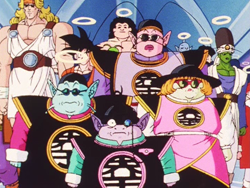
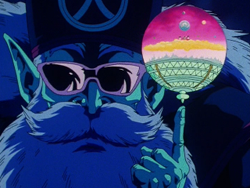
As Akira Toriyama explains in his interview in the Super Exciting Guide: Character Volume, Kaiō are chosen from the members of a certain race called the Shin-jin (芯人), or “Core People”. They are called this because they are born from inside the fruit of the Kaiju (界樹; “World Tree”) which grows on Planet Kai-Shin (界芯星; “Planet World-Core”). Kai-Shin is a planet located in an unknown part of the macrocosm, and is like a larger version of the planets that each Kaiō live on. There are roughly 80 Shin-jin living on Kai-Shin, and they spend their days living peacefully, studying various topics in a large castle. When one of the Kaiō dies, a replacement is chosen from among the Shin-jin by lottery. Shin-jin live for about 75,000 years, so this does not happen too often. Toriyama notes that the Shin-jin have no gender, though all of them have some male or female characteristics. North Kaiō’s planet is said to be over 100 million years old, implying that the Shin-jin have been doing this “Kaiō” gig for at least as long.
Similar to other deities in the “Dragon World”, Kaiō are mortal beings that can die. Northern Kaiō is killed when Goku teleports Cell to his planet moments before Cell self-destructs (taking out the two of them plus Bubbles — as well as Gregory in the anime — in the process). The idea of Kaiō replacements by lottery came from Akira Toriyama many years later, which is likely why no replacement ever seems to be so much as hinted at during the series proper. Death does not seem to keep Kaiō from enjoying themselves, so to speak.
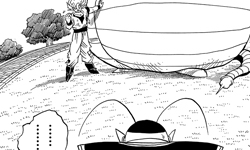
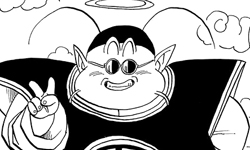
In Dragon Ball Z movie 9, Gohan and friends come up against a new villain named Bojack. Described as a “thug brimming with an evil ki,” Bojack wandered the four galaxies attempting to destroy each one of them. The four Kaiō put their powers together and had sealed him up on a planet at the “far end of the galaxies”, but it appeared that Northern Kaiō’s death somehow broke the seal and allowed him to escape.
After laying waste to the Northern, Southern, Eastern, and Western galaxies, he was sealed by the four Kaiō at the far end of the galaxies. After [the North] Kaiō and his planet were wiped out when Goku defeated Cell, his seal was broken and he was revived. He plans on ruling the universe, starting with Earth.
— “Dragon Ball Daizenshuu 6: Movies & TV Specials” (p. 118)
This seems to be a case of the Kaiō taking their own well-being into consideration and looking out for more than just their own jurisdictions; were Bojack simply a villain contained to one planet like the Demon King Piccolo (who Kaiō mentions by name during the movie, saying that Bojack possessed a far greater evil ki than he), it is likely that the Kaiō would have ignored him just the same.
Later, in Dragon Ball Z episode 196, it is noted that the four Kaiō had last gathered 300 years prior. This scene takes place in Age 767, and thus this gathering would have taken place in roughly Age 467. There is no mention of exactly why they gathered, but with episode 196 airing 11 August 1993 and Movie 9 having just recently premiered a month earlier on 10 July 1993, one may be tempted to tie this gathering and the sealing of Bojack together.
The Kaiōshin
Positions: One per galaxy (North, South, East, and West)
The Kaiōshin are the “Gods of the Kaiō”, who stand above even the Kaiō themselves. In essence, they are the gods to the gods, overseeing not merely the universe, but also the afterlife where the Kaiō themselves live. For each of the Kaiō (North, South, East, West, and Great), there is a corresponding Kaiōshin: like with the Kaiō, the four Kaiōshin of the cardinal directions oversee the northern, southern, eastern, and western galaxies (and presumably the four quadrants of the afterlife), while the Dai Kaiōshin oversees the entire universe and afterlife.
The various Kaiō govern the infinitely expansive universe [of the living world]. This is primarily determined by the cardinal direction, while the Dai Kaiō serves as general manager of the places governed by the Kaiō, and beyond that the Kaiōshin of the North, South, East, and West govern the overall universe. Ultimately, the Dai Kaiōshin supervises the universe in its entirety.
— “Dragon Ball Daizenshuu 4: World Guide” (p. 54)
In addition to this wider scope, they are also far more powerful than the Kaiō: while North Kaiō was weaker than Nappa, East Kaiōshin says that each of the Kaiōshin were strong enough to defeat Freeza with a single blow. Daizenshuu 7 states that the Kaiōshin will interfere in the affairs of both the living world and afterlife if an event is deemed capable of deciding the fate of the “Dragon World”. In Dragon Ball Super episode 53 Gowasu of Universe 10 discusses Kaiōshin interference, stating that the role of Kaiōshin is to create and observe, and that only the Gods of Destruction are allowed to directly interfere.
Of course, under important circumstances where the fate of the entire universe is at stake, [Kaiōshin] sometimes interfere with both the Afterlife and the World of the Living.
— “Dragon Ball Daizenshuu 7: Dragon Ball Large Encyclopedia” (p. 37)
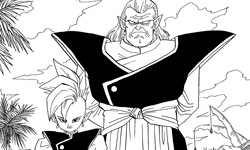
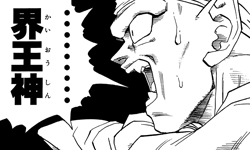
While the Kaiōshin are only ever shown performing a supervisory role in the series, it is revealed in the 2013 theatrical film Dragon Ball Z: Battle of Gods that they are also the counter to the Gods of Destruction and wield the power of “creation”. In order to expand life throughout the universe, the Kaiōshin establish new planets and fill them with a myriad of life-forms, either transplanted from other planets or newly created, of various sentient levels. Akira Toriyama details the relationship between these two contrasting deities in his interview featured in the first Chōzenshū.
Rather than Kaiōshin-sama making planets, he is able to provide the impetus for them to be born. Also, he will sometimes divide up one planet and increase the number of planets. He will even do things like create life-forms, or transplant them from another planet, but his basic job is to watch over the numerous planets. Because the number of planets is so very large, the four Kaiō-sama help him out as well. They intervene if it appears that the world’s balance will crumble, but normally, they merely act in an advisory role for new life-forms, and don’t get involved. In order to provide a balance to the constantly increasing number of planets, the God of Destruction destroys [them], but he does not act on Kaiōshin’s orders; he destroys according to his own individual judgment. Except, he is capricious, so he will destroy even an important world without a second thought, or when he finds it bothersome, let someone else act as an agent of destruction.
— “Dragon Ball Chōzenshū 1: Story & World Guide” (p. 31)
The Kaiōshin are assisted by a being called Kibito, whose name comes from the Japanese word tsukibito (つきびと), meaning “attendant”. In the original manga and animated adaptation it is never clarified exactly what Kibito is or where he came from. He is listed in officially published hierarchies as an attendant to all of the Kaiōshin, even though within the series itself he is only ever seen assisting East Kaiōshin; this is presumably because the others are all deceased. Kibito’s main duty seems to be using his Kai-Kai technique to teleport the Kaiōshin from planet to planet, in addition to his healing ability.
The Dragon Ball Super manga reveals that all those who serve under a Kaiōshin are capable of using the same healing powers as Kibito. This includes Zamasu (due to his role as apprentice to the Universe 10 Kaiōshin Gowasu) and even Trunks, who briefly became the disciple of his parallel timeline’s version of the Universe 7 Kaiōshin. According to Trunks in Dragon Ball Super chapter 24, the Universe 7 Kaiōshin danced around him for three whole days as part of the ritual to make him a disciple, and though Trunks did not know it at the time, this same ritual conferred upon him the power to heal people. Presumably then, both Kibito and Zamasu gained their own healing powers in this same way, although it is still not clear where Kibito came from before he began to serve Kaiōshin.
The only people in the Kaiōshin Realm are the Kaiōshin, and Kibito, who acts as their support.
— “Dragon Ball Daizenshuu 7: Dragon Ball Large Encyclopedia” (p. 37)
To allow them to oversee both the afterlife and living world, the Kaiōshin live in the Kaiōshin Realm, which is located outside the macrocosm, and revolves around it similar to how the moon revolves around the Earth. The Kaiōshin’s greatest treasure are the Potara earrings, which allow them to fuse with others to obtain even greater power. Potara fusion is permanent if performed with a Kaiōshin, but Gowasu explains in Dragon Ball Super episode 66 that for those who are not Kaiōshin, the effects of the Potara only last one hour. Kaiōshin also wield the power of Time Rings, which can be used to travel to and from the future to observe the development of a civilization. In Dragon Ball Super episode 54, Gowasu states that only Kaiōshin are qualified to use Time Rings and warns that travel to the past is strictly forbidden, as changing history is extremely dangerous.
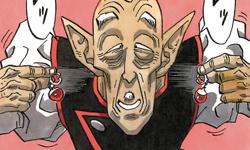
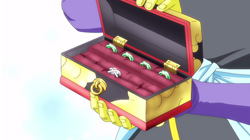
Continuing on from his explanation of Kaiō origins in the Super Exciting Guides: Character Volume, Akira Toriyama additionally explains that Kaiōshin are only selected from among Shin-jin born from golden Kaiju fruit, which are particularly rare. The golden fruit Shin-jin have a much longer lifespan than regular Shin-jin, as East Kaiōshin has lived for five million years, while regular Shin-jin have a lifespan of only 75,000 years. However, Akira Toriyama later provided a contradictory answer to this in his “Twel-Boo Mysteries” interview with Naho Ooishi when asked who can become a Kaiōshin.
No one can. Kaiōshin are born as Kaiōshin. There are three of them, and they work in shifts. Though there are two of them on duty now, if one of the Kaiōshin were to die in an accident, then the currently-inactive Kaiōshin would grow in the Kaiōshin Realm like a plant. If there aren’t any accidents, then it’s said their lifespans are about 75,000 years.
— “Twel-Boo Mysteries”, Saikyō Jump June 2014 Issue
Daizenshuu 7 states that five million years before the beginning of Dragon Ball, Majin Boo killed the North and West Kaiōshin, and absorbed the South Kaiōshin and Dai Kaiōshin. Despite this, so far these missing Kaiōshin have not been replaced, leaving the East Kaiōshin as the sole highest god in Universe 7 for millennia. This may be due to the extreme rarity of golden Kaiju fruit, as none may have grown in all these years. Eventually an older East Kaiōshin from 15 generations ago is unsealed; while Goku and Kibito both refer to him as Dai Kaiōshin at several points (the first time this term is ever used in the series), it is not clarified if he does officially take over that post, or if this is just Goku and Kibito’s way of being polite and distinguishing him from the younger Kaiōshin. Guidebooks and other secondary sources generally label him as “Elder Kaiōshin” or “Kaiōshin from 15 Generations Ago”. Akira Toriyama later provided the backstory behind the Elder Kaiōshin being sealed in the Z Sword in his “Twel-Boo Mysteries” interview.
The Kaiōshin (who create planets) and the Gods of Destruction (who destroy them) have never gotten along that well, but once every 1,000 years they go to each other’s realms and hold a coordination meeting. At this time, they got into an argument over some trifling thing, and a certain short-tempered God of Destruction sealed Elder Kaiōshin away inside a sword. Naturally, it wouldn’t have been proper for him to destroy the Kaiōshin Realm itself. By the way, that God of Destruction was Beerus.
— “Twel-Boo Mysteries”, Saikyō Jump June 2014 Issue
Dragon Ball Super also shows that a Kaiō can be promoted to the post of Kaiōshin following an apprenticeship under a current Kaiōshin, as is the case with Universe 10’s Zamasu and Gowasu, though it is possible that this system is unique to Universe 10 and does not apply to Universe 7. However, in chapter 24 of the Dragon Ball Super manga, the Universe 7 Kaiōshin talks as if he used to be the disciple of the Dai Kaiōshin, filling the same servant role as Kibito.
The Makaiō and Makaiōshin
Following his explanation of the origins of the Kaiō and Kaiōshin in the Super Exciting Guides: Character Volume, Akira Toriyama reveals the existence of “Makaiō” and “Makaiōshin”, gods of the Demon Realm (an area which, according to Daizenshuu 7, not even the gods’ eyes can reach). They are the antithesis of the Kaiō and Kaiōshin, and govern evil. Toriyama states that the Kaiōshin’s power is currently greater than that of the Makaiōshin, which holds them in-check. When an evil Shin-jin is born, they leave Planet Kai-Shin and go to the Demon Realm to be with the Makaiō. However, it is not actually known if Makaiō or Makaiōshin themselves are selected from among these evil Shin-jin, or if they are beings native to the Demon Realm, and the evil Shin-jin are simply their allies.
It is also not known if Dabra was a Makaiō or Makaiōshin; though his title “King of the Demon Realm” has the same meaning as “Makaiō”, Toriyama does not say whether he is one or not. He could simply be a political ruler of the Demon Realm and not its god, just as the King of Earth is different from the God of Earth. It is also not known how many Makaiō or Makaiōshin there are in total, or how they are chosen for their posts. For the most part, besides Toriyama’s single explanation, not much is known about them at all.
For more information about the demons in Dragon Ball and the Demon Realm, please visit our “Demon Guide” in the tidbits section of the site or the “Demon Realm” section included on “The Universe” page of this respective guide.
The Hakaishin
Positions: One per universe (not fully clarified)
While the Kaiōshin hold the power of “creation”, which provides the catalyst for planets and life-forms to be born, the God of Destruction is true to its title and holds the power and authority of “destruction”. As new planets are born, the God of Destruction destroys existing planets in order to maintain the balance of life in the universe. In contrast to the Kaiōshin, who are only powerful in their own right as gods compared to most mortals, the Gods of Destruction wield far greater power and their strength can rarely be challenged.
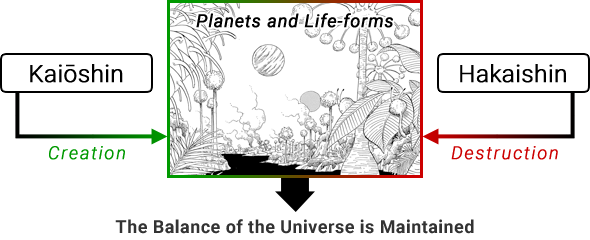
It is revealed in the 2013 theatrical film Dragon Ball Z: Battle of Gods that the “Dragon World” is comprised of 12 universes, and that Beerus is the God of Destruction of the 7th universe, the location of Earth (Planet 4032-877). Beeurs implies in the movie that there are other Gods of Destruction in addition to himself, but it is not until Dragon Ball Super when God of Destruction Champa from the 6th universe is introduced that anything is definitively stated about each universe having its own God of Destruction.
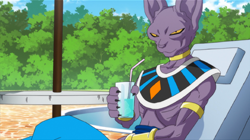
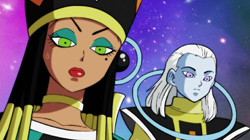
In episode 42 of Dragon Ball Super, following the tournament between Universe 6 and 7, Beerus informs Goku that each universe has its own God of Destruction. This is the first instance of this fact being explicitly stated. All 12 universes’ Gods of Destruction are introduced during the “Universe Survival” story arc.
The other universes’ Gods of Destruction are vicious. If we lose in the martial arts tournament between all the universes, there’s no telling what might happen to this Earth.
— “Dragon Ball Super Episode 42”
Whis reveals in Dragon Ball Super episode 55 that the God of Destruction is linked to the Kaiōshin of the same universe so that the two form a “set”; meaning that if one dies, the other will as well. Much to Beerus’ chagrin, Goku quickly realizes that the simplest way to defeat a God of Destruction is to merely kill their comparatively-weaker Kaiōshin. This link appears to be known only by very few, as Chōzenshū 1 indicates that the connection between the two remains “shrouded in mystery”, but Zamasu and Goku Black fully exploit this secret in their campaign to wipe out the gods of Trunks’ parallel timeline.
Angel Attendants
The Gods of Destruction are assisted by angels dispatched by the Omni-King. The main role of an angel is to guide the God of Destruction they serve, as well as train them and keep their destructive power in check. Angels are amoral and indifferent in nature; as Whis explains in Dragon Ball Super chapter 18, they must remain neutral in conflicts and cannot intervene. Angels are also quite intelligent, exhibiting a thorough knowledge and understanding of the Dragon World’s hierarchy, structure, and inner workings. Each angel wields a staff allowing them to communicate with other deities, project events from the past, observe current events throughout the cosmos, shield themselves from attacks, and travel nearly anywhere they desire, among many other capabilities. Whis has demonstrated the ability to rewind time back a maximum of three minutes, but it is unknown if the other angels share this skill.
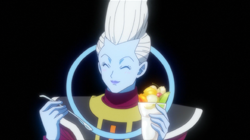
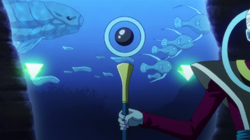
Universe 7’s Kaiōshin reveals in episode 63 of Dragon Ball Super that an angel is directly linked to their respective universe’s God of Destruction position, meaning that if the God of Destruction an angel serves dies, the angel will “cease to function” until a new God of Destruction is appointed. However, during the “Universe Survival” arc, angels are seen to remain active even after their Gods of Destruction have been wiped out, though this is possibly a special circumstance, since the elimination of an entire universe means that its God of Destruction post will never be filled again. During his first appearance, the Omni-King jokes about replacing Beerus and Champa with new Gods of Destruction, so it would appear that he holds some amount of (perhaps final?) authority to appoint Gods of Destruction.
Succession
Throughout Dragon Ball Super Beerus often wonder if Goku is aiming to steal his job as Universe 7’s God of Destruction. Whis even asks Goku if he would be interested in taking over as the new God of Destruction once Beerus dies, and says he will teach Vegeta if Vegeta became a God of Destruction. Later the “Universe Survival” arc introduces Toppo, a candidate to be Universe 11’s next God of Destruction (a “Candidate for God of Destruction”, or 破壊神候補; Hakaishin Kōho), a status he holds with the approval of Universe 11’s current God of Destruction Vermoud and the Kaiōshin Khai. Vermoud notes in chapter 28 of the manga that it has been 87,910,715 days since he became a God of Destruction, and that he plans on retiring any day. Toward the end of the arc, Toppo sheds his pride during his battle against Vegeta, Freeza, and #17 and appears to become a fully-fledged God of Destruction. Nothing is further explained about this apparent contradiction with perhaps two Gods of Destruction in a single universe.
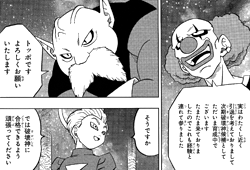
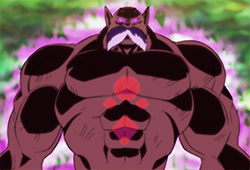
Toppo is clearly not from the same species as Beerus and Champa, and the Gods of Destruction from the other universes are a diverse mix of various species. Based on all this, it seems likely that Gods of Destruction are recruited from among strong individuals of any species, in much the same way that the gods of specific planets are recruited from among outstanding members of the local population. It remains unclear though how Beerus and Champa became Gods of Destruction for two separate universes, since being siblings they presumably originate from the same universe.
Destruction Energy
As early as the 2013 theatrical film Dragon Ball Z: Battle of Gods, we are introduced to the concept of a God of Destruction’s ability to — appropriately enough — destroy. While this at first seems to be done through traditional means of exceptional power, the Dragon Ball Super television series later expands on this with a specific type of energy: 破壊のエネルギー (Hakai no Enerugī or “energy of destruction”), or simply 破壊 (hakai or “destruction”).
In Dragon Ball Super episode 59, Beerus and the others return to Universe 10 after confirming Zamasu’s plan to murder Gowasu. It is here that Beerus completely destroys the present-day Zamasu, verbally saying Hakai aloud as he does so.
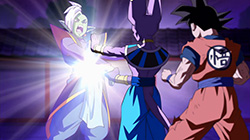
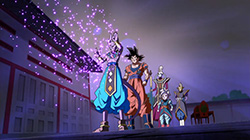
In chapter 25 of the Dragon Ball Super manga, following failed attempts at destroying Zamasu and Black with the Mafūba and even Super Saiyan Blue Vegetto, Goku attempts to use destruction energy on Merged Zamasu; Goku states beforehand that he will be using Beerus’ technique (which he previously called “horrible”), and Trunks and Vegeta specifically call it out as “Beerus’ technique”. Zamasu ends up taking Mai as a hostage and is able to regenerate from the in-process destruction.
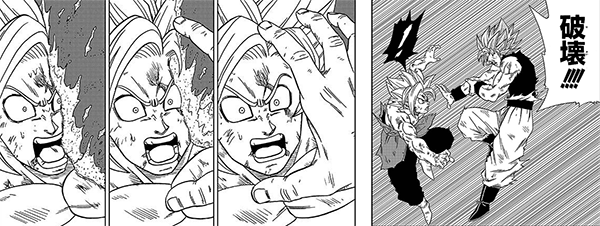
In Dragon Ball Super episode 95, the Universe 9 God of Destruction Sidra donates a small amount of destruction energy to an assassination squad whose secret mission is to kill Son Goku before the Tournament of Power. Over the course of this incident, Freeza shows that he is able to push back and ultimately resist the destruction energy. Furthermore, Freeza uses that same energy against Goku, who is able to resist the destruction long enough for Beerus to arrive and blow the energy away.
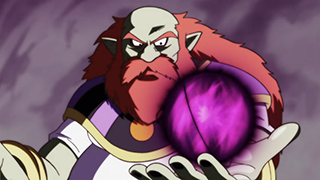
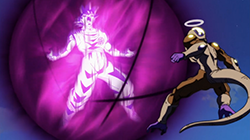
Following his transformation into a God of Destruction in Dragon Ball Super episode 125 into episode 126, Toppo is capable of seemingly creating and using destructive energy on his own.
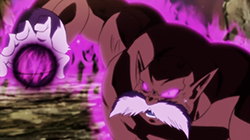
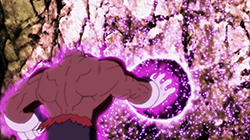
Zen’ō
Positions: One (per timeline)
Introduced in Dragon Ball Super episode 40, the Omni-King sits atop the hierarchy of divine beings. Following the tournament between Universes 6 and 7, Beerus and Champa are shocked at the sudden appearance of a small figure which they refer to as Zen’ō (“King of All”). In Dragon Ball Super episode 41 it is explained that the Omni-King “stands at the summit” of the twelve universes. As mentioned above, the Omni-King implies that he holds the authority to appoint new Gods of Destruction, and Toriyama explains that angels are dispatched from the Omni-King. Beyond that, further details on his exact role are lacking. In fact, rather than fulfilling some sort of role or job as most other gods do, the events of the “Universe Survival” arc show that the Omni-King simply tries to keep himself entertained, and all other lifeforms are forced to go along with his whims. Omni-King wears a robe featuring 全 (zen), the kanji for “all” (used to write the “Zen” in his title), appearing both right-side up and vertically mirrored on both the front and back of the robe.
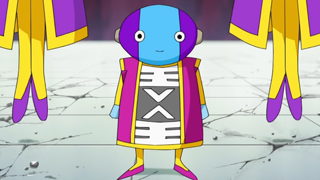
The universes’ Gods of Destruction are shown to mostly display reverence for the Omni-King, who speaks and acts much like a young child, though they also fear the unfathomable power he wields. Beerus reveals to Goku in episode 41 that if Omni-King felt like it he could instantly obliterate the twelve universes. Beerus and Whis expand on this in Dragon Ball Super episode 47, explaining to Goku that there were originally 18 universes, but Omni-King destroyed six of them when slightly offended. Beerus further tells Goku that while Omni-King does not fight, he is indeed stronger than anyone else, with Whis adding that Omni-King is capable of instantly wiping out “anything”, an ability which the Omni-King first demonstrates onscreen when he destroys Trunks’ dystopian future. Following the battle with Zamasu, Goku brings the Omni-King from this parallel timeline to the present, resulting in the current timeline having two Omni-Kings.
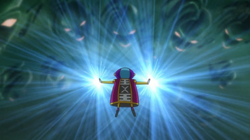
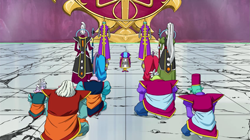
While the universes’ Gods of Destruction and Kaiōshin choose their words very carefully in the presence of the Omni-King, often speaking with a humbling formality and bowing in respect, the angels he has dispatched to guide them speak much more casually to him and also never bow in his presence. In episode 41 of Dragon Ball Super, both Whis and Vados jokingly complain about their Gods of Destruction, resulting in the Omni-King joking suggestion that he replace them.
Omni-King is accompanied by two tall, skinny attendants who stand to either side of him and enforce proper manners and etiquette in his presence. The pair rarely speak, often standing stoically next to the Omni-King(s), although they occasionally react in dismay when he is addressed in an informal fashion. In Dragon Ball Super episode 55 the attendants tell Goku to watch his tongue when he boldly addresses Omni-King, but Omni-King in turn quickly tells them to be quiet or he will erase them from existence. While they have yet to display any show of strength, Omni-King’s attendants have shown some unique abilities, such as in episode 41 when they disappear into the tournament ring below and reappear in front of Goku in an attempt to stop him from approaching the Omni-King.
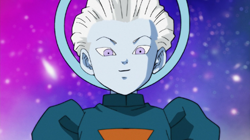
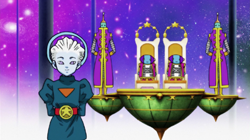
Omni-King is also assisted by his aide, the Great Priest, an angel who often acts as the Omni-King’s representative and messenger to the universes’ various gods. The Great Priest also advises the Omni-King when appropriate, and is shown to be one of the few that can calm the childish deity when aggravated. Much like the angels serving the Gods of Destruction, the Great Priest is rather amoral and indifferent in nature, maintaining a calm and polite demeanor at all times, even when revealing the Omni-King’s intentions to erase all losing universes in the Tournament of Power. However, his calm demeanor should not be taken lightly, as Whis explains to Goku in episode 55 that the Great Priest is said to be one of the five most powerful people in all the universes. It is revealed in episode 67 that the Great Priest is Whis’ father, and in chapter 29 of the manga the Universe 8 angel Korn likewise refers to the Great Priest as his father while talking with Whis (note that in Japanese they are unambiguously indicating a familial relationship and not referring to him as “father” because of his status as a priest). Since Vados is Whis’ older sister, she is presumably another of the Great Priest’s children, but it remains to be seen how many of the other angels are part of this family.
Anime Original Gods
Throughout the animated adaptation of the Dragon Ball manga, numerous anime original characters have been created, including a few gods. While many of the gods detailed above serve broader oversight roles, the majority of the original characters developed exclusively for the animated adaptation are created to perform very specific roles, typically only relevant to that specific story point, and are never mentioned again.
During the wedding dress filler story arc at the end of the original Dragon Ball TV series, a goddess named An’nin is introduced as the guardian of the Furnace of Eight Divinations (located on the Mountain of Five Elements) which connects the living world to the afterlife. Goku and Chi-Chi seek her out, as a hole in the furnace has caused its flames to surround Mount Frypan. However, if the furnace’s flame were to be put out, then the living world would be thrown into chaos (and to make matters worse, re-lighting the furnace’s fire takes 2,000 years). Using the Bashō Fan and some other recently acquired materials, Goku is able to fill the hole and save his father-in-law-to-be, the Ox Demon King, who had been trapped by the flames in his castle on Mount Frypan. It is revealed that An’nin has been performing her duties for over 10,000 years (she is a bit sensitive about her age), and as Goku discovers, his late Grandpa Gohan has recently begun assisting her. This entire story arc is loosely based on the Monkey King’s encounter with the founder of Taoism, Laozi, in the novel Journey to the West, with An’nin playing the role of Laozi. As such, she is even referred to with the title, “Supreme Elderly Lord” (太上老君; Taijō-Rōkun), the same title the deified Laozi bears in the novel.

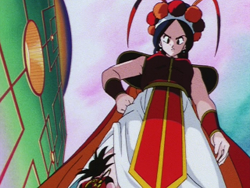
In Dragon Ball episode 81, Goku travels to the Demon Realm through the Demon Realm Gate in order to rescue Princess Misa, who was kidnapped by Shura, the martial arts master of the Demon Realm. This filler episode, set just prior to the 22nd Tenka’ichi Budōkai, is notable for mentioning King Enma and Earth’s God long before either makes an appearance in the main story. In addition to them, the episode also mentions shinigami (死神), or “death gods”. Gora and Mera, two of Shura’s minions, explain to Goku as he enters the Demon Realm that he must have a special permit from King Enma and God to be granted permission to pass. After Goku says he does not have one, they elaborate that this permit is what gives shinigami permission to use the Demon Realm Gate that connects the living world to the afterlife. Gora and Mera are loosely based on the same Ox-Head and Horse-Face as Gozu and Mezu would later be in the Dragon Ball Z television series’ filler material.
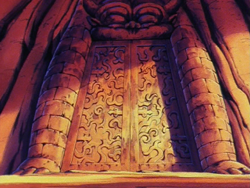
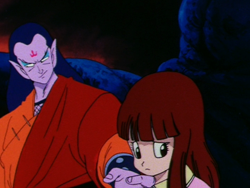
In Dragon Ball Z episode 14, Goku meets the Snake Princess, an afterlife beauty queen living with various servants in a palace located at the Serpent Road’s midpoint. Initially hospitable to Goku, once she learns he is already married she shows her true colors. In reality the Snake Princess is actually the Serpent Road Goddess (蛇道神; Jadōshin) who has inhabited the road for 1,500 years. Her humanoid form, her servants, and her entire palace are all just an illusion masking her true form: a giant fire-breathing snake quite similar looking to the Serpent Road itself. Thankfully Goku manages to escape by tricking the snake into tangling itself up. This filler material was based on notes Akira Toriyama provided the anime staff, although Toriyama’s original idea was simply the giant snake and did not include the beautiful human form or the other illusions.
During the Garlic Jr. filler story arc of the Dragon Ball Z TV series, Earth’s current God travels deep into the bowels of his temple and encounters the spirit of the Earth’s previous god. The previous god does not like him trespassing on sacred ground and is upset that an alien was allowed to become the God of Earth, and he tries to remove his soul by thoroughly shocking him. According to Daizenshuu 7, the god of the previous generation resides in the Divine Sage Realm, a place located in the bottom of the Heavenly Realm; being dead he has no physical body, and instead appears as a shadow draped in a cloak and holding a staff similar to that of the current God.

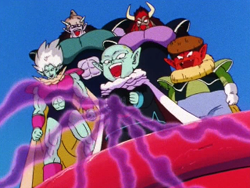
Garlic Jr. himself uses the “Aqua Mist”, an item belonging to the god of the previous generation. When humans inhale this mist, the evil in their hearts is awakened, turning them into members of the Demon Clan. It is shown throughout the series that many of the gods utilize special items to either assist them in their divine duties or to supplement the training of their pupils. The cat sage Karin is known to give out numerous items to those training under him, including the Super God Water, Senzu, and Kinto-Un. Additionally, when Goku later arrives at God’s Temple in Dragon Ball episode 130, Mister Popo creates a doll with Goku’s same appearance and abilities to serve as his training partner.
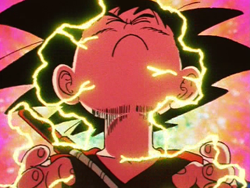

In Dragon Ball Z Movie 3, the Shinseijū (“Tree of Godly Might”) is planted on Earth by Tullece and his henchmen, the Tullece Crusher Corps. Tullece plans on growing the tree on Earth to harvest its fruit, which is said to be only for “the gods” to eat. When the tree takes root, it sucks its nourishment from its host planet, and those that eat the fruit are able to then absorb that planet’s energy. The result is that the host planet is completely sucked dry and becomes a desert, and for hundreds of years afterward, “not even a single blade of grass will grow in its soil.” When Goku defeats Tullece with a Genki-Dama, it knocks him up through the tree, breaking it, and the absorbed nourishment rains back down upon the planet. It is never made clear exactly which “gods” the fruit are for, just that “only kami-sama (gods) are allowed to eat the fruit of this tree.” At this point in the franchise, the highest level of gods introduced are the Kaiō, by way of Goku training with North Kaiō before the Saiyans arrival on Earth. However, North Kaiō makes no mention in the movie of he, himself, ever actually eating the fruit.
In Dragon Ball Z Movie 13, Tapion says that “God” gave him a magic sword and flute with the power to seal the monster Hildegarn away. Presumably this would be Planet Konats’ God, though the statement is left vague and never explained.
The Author’s Role as “God”
Akira Toriyama, the original author of Dragon Ball, is included in Daizenshuu 7’s “Character Dictionary” due to the technicality of his brief appearance during the Majin Boo arc in chapter 480:
Characteristics: The ultimate ruler of the Dragon Ball World, and a far, fa~ar greater person than even Kaiōshin. His likes include cars, bikes, plastic models, movies, dogs, and women. His dislikes include having his ideas rejected by his editor, rats, and his job.
Battles: For over 10 years, he bravely battled against having his editor reject his ideas. You should be intensely grateful.
In the “I Love Dragon Ball” section of Shenlong Times #7, manga author Masakazu Katsura notes that while working on DNA², Akira Toriyama advised him to have his main character’s hair change color when he transformed and to fight. Katsura notes that he took this as the “word of God” and followed it even though he felt somewhat uneasy about it being too similar to Super Saiyan — as a result, Dragon Ball fans scolded him for plagiarizing.

